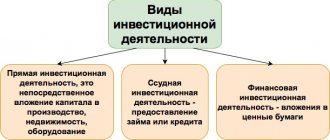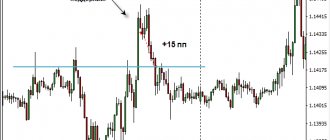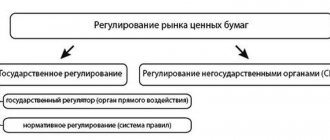“Strategy” is a military term meaning the art of war, where it is impossible to achieve victory with one blow. The strategy involves long-term operations in the theater of war in conditions of a shortage of military resources with the goal of defeating the enemy. The goal of strategy is to win not just one battle, but the war as a whole.
In economics, this term almost completely corresponds to the military one, since strategy in economics involves achieving a goal in conditions of scarcity of resources while using them to the maximum possible extent.
Where am I now?
The first step in building a strategy is organizing your financial life. To put yourself on the right track, create a clear picture that takes into account:
• income; • expenses; • savings; • net profit (assets held – liabilities).
Keep track of these items as you move towards your financial goals. In some situations, you will have to focus on cutting costs, secondly, on savings, and thirdly, on increasing net profit.
When assets conflict with an accepted investment strategy
When choosing a direction for investment, it is necessary to take into account the type of investment strategy adopted. Here the investor is limited in possible options of action. So, if you choose speculative, aggressive or moderately aggressive behavior, then you can use almost the entire range of assets offered by the market. If you pursue a balanced or protective financial policy, then this imposes restrictions on the investment instruments used. Here it is already necessary to compare your capabilities with the consequences and set time horizons for your goals.
If your preferences in behavior as an investor and the chosen instruments do not coincide with the investment strategy, you can still leave the developed plans unchanged. But at the same time, it must be clearly understood that such a discrepancy will have an impact on the expected result.
It is quite clear that it is better for conservative investors not to resort to aggressiveness in their strategy in order to preserve capital, and for investment aggressors, on the contrary, it is preferable to abandon low-yielding protective assets.
The universal type of investor can be defined as rational. Rationalism tends not to go to extremes and choose the golden mean to ensure stable profits. A stable investment portfolio allows for the use of all available instruments in reasonable proportions. Such a balanced strategy is flexible and can be adjusted at any time towards conservatism or aggressiveness, depending on what promises greater benefits.
Where do I want to be?
Having found out where you are, it is logical to move on to the question of where to go. Ask yourself, what are your financial goals? They can be short-term, medium-term and long-term. Do you want to buy a house? Vacationing in the Caribbean? Earn 10 million? List everything you want to get from your investment. The clearer your goal, the more confident you will be in managing your investments.
Interrelation of the main directions of the enterprise’s investment policy
During this stage, the consistency of individual directions of the enterprise’s investment policy in terms of volumes, implementation deadlines and other parameters is ensured.
With large volumes of investment activity of an enterprise, its investment policy is differentiated in terms of real and financial investment.
Study the entire investment policy of the enterprise in the practical course “Investments”:
Investments: practical interactive multimedia distance learning course
Explore today
Conflictology
Practical logic and argumentation
STERILIS: asepsis and antiseptics in the practice of a cosmetologist. Everything about the prevention of complications and secondary infections
Development of intuition and observation
Budgeting and intra-company planning
Personnel Management
Developing self-confidence
IV Advanced dissection cadaver course on invasive methods for correcting various areas of the face. Day three: live injection master class
Dissection cadaver course on injection and thread techniques in cosmetology. Day three: live injection master class
What financial goals are most important to me?
Having and achieving a large number of goals is great in theory, but in practice, to avoid giving up halfway, prioritize. Figure out which tasks are more important. The most desirable ones should be in the foreground, regardless of the time frame. For example, if it is important for you to have wealth for a comfortable old age, save today.
What idea did I use in my trading strategy?
I read the article by HSE professor Tamara Viktorovna Teplova “Momentum effect in the stock market and the investment trading strategy “with the flow”: testing methods and development of a financial asset pricing model.”
The momentum effect in the securities market is a price anomaly that is based on a fairly simple principle of “buy the best.” Let me explain: a period is taken, for example a year. A certain number of the best papers for this period are selected from a pre-compiled list of papers. After a year, the securities are sold and the best ones from the previous year are bought instead. The criteria for ranking the best securities can be different: the change in the price of the security, dividend yield, the ratio of the company's book value to its market valuation, etc. I chose the historical return of the stock.
The main promoter of momentum investing is the founder of the investment fund AQR Capital Management.
The Asness Foundation has developed the AQR Momentum family of indices. Actually, the AQR Momentum Index includes 1,000 shares of American companies with large and mid-caps. There is also a Small Cap fund in the family - this index includes 2,000 American stocks with a small capitalization.
What ROI should I have to achieve my goals?
The next step in creating a roadmap is predicting success. ROI (Return Of Investment) is the return on investment. The indicator shows how much money you get from each invested ruble or dollar. It is impossible to take into account all factors, but it is important to roughly understand how much income is needed to achieve the goal.
An easy way to find out is to use an online calculator that takes into account the impact of inflation and regular additional investments.
Types of investment strategies
Investment management methods are varied and numerous. They can be based on cautious conservatism with a low level of return, but with a high degree of capital protection, or based on aggressiveness in the search for excess profits, but with the risk of significant financial losses.
Conservative investors use optimally safe investment instruments in their strategy:
- stable world currencies;
- bank deposits;
- Eurobonds or government bonds;
- precious metals such as gold and silver;
- products that maximize capital protection.
A balanced strategy occupies an intermediate position between a conservative and aggressive way of investing. It is often chosen by both financial investment companies and individual private investors. It is based on the investor’s awareness of the acceptable share of risk and the use of dangerous speculative financial instruments along with reliable safe assets.
Among the assets associated with a certain amount of risk are the following:
- securities of private companies and enterprises;
- state and municipal loan bonds;
- unstable currencies with high volatility.
An aggressive strategy promises the investor high returns in a short period of time due to the inclusion in the investment portfolio of a significant share of assets associated with high risks due to unpredictable momentary stock market speculation. Such financial instruments include highly volatile currencies and securities, futures, options and derivatives based on precious metals and other commodities.
Aggression in strategy justifies itself if the investor either has a base of deep economic knowledge and skills in its practical application, or trusts the investment company managing his capital and is willing to take certain risks to achieve his goals.
What will happen to me if my assets fall by 20%?
So you know how fast you need to go, but that speed won't be constant. Therefore, you need to psychologically prepare for difficulties.
Risk tolerance refers to how willing you are to tolerate ups and downs in asset values. Be honest with yourself. With fluctuations of 10-20-30%, even the most ingenious investment plan will not be useful if you cannot resist them. Ask the question - will I deviate from the strategy if the markets rise by 20%, but my portfolio only rises by 10%?
Formation of the enterprise’s investment policy in the main areas of investment
At this stage of investment policy formation, the ratio of the volumes of real and financial investment in the process of its upcoming investment activity is determined. Optimization of this ratio is based on taking into account a number of objective external and internal factors, the main of which are:
- Functional orientation of the enterprise.
- Stage of the enterprise life cycle.
- Enterprise size.
- The nature of strategic changes in operating activities.
- Predicted interest rate in the financial market.
- Projected inflation rate.
The functional focus of activity significantly influences the ratio of areas of real and financial investment. Enterprises - institutional investors carry out their investment activities primarily in the securities market. Consequently, the main direction of their long-term investment activity will be investing in stocks, bonds, savings certificates and other stock instruments. The share of real investment in such enterprises can fluctuate only within the limits permitted by law for each of these groups of investors.
At the same time, for enterprises engaged in production activities, the primary direction of investment will be real investments (in the form of capital investments, purchase of privatization objects, etc.) It is this direction of investment that allows such enterprises to develop at the highest rates, master new types of products, penetrate new commodity and regional markets.
Financial investments of such enterprises are associated, as a rule, with short-term investments of temporarily free funds or are made with the aim of establishing control (influence) over the activities of individual companies (partner enterprises, competitor enterprises, etc.)
The stage of an enterprise's life cycle determines the needs and possibilities for implementing various areas of investment. Thus, at the stages of “childhood” and “adolescence”, the overwhelming share of investments made by an enterprise is in real form; at the “early maturity” stage, this direction of investment also predominates; Only at the stage of “final maturity” can enterprises afford a significant expansion of the share of financial investments.
The size of the enterprise influences the ratio of directions of real and financial investment indirectly through the possible volume of formation of investment resources. Small and medium-sized enterprises, whose free access to borrowed financial resources is limited, have certain difficulties in forming a “critical mass of investments” that ensures the profitable development of operating activities.
In this regard, the investment activity of small and medium-sized manufacturing enterprises is concentrated primarily on real investment, because they lack the appropriate resources to make financial investments. At the same time, large enterprises have a higher level of financial flexibility (access to external sources of financing), which gives them the opportunity to make financial investments on a larger scale.
The nature of strategic changes in operating activities determines the different cyclicality of the formation and use of investment resources. Modern literature identifies two fundamental characteristics of strategic changes in the operating activities of an enterprise - gradual and intermittent changes.
SEE ALSO: Execution of the financial plan: issues of its implementation and control
With gradual strategic changes in operating activities, the investment resources generated by the enterprise are consumed, as a rule, within each interval of the strategic period for the needs of real investment. Under these conditions, financial investment is short-term in nature, using temporarily free investment resources and is carried out in small volumes.
With intermittent strategic changes in operating activities, enterprises accumulate a fairly significant amount of temporarily unused investment resources, which can be used in the process of financial investment - both short-term and long-term.
The predicted interest rate in the financial market influences the ratio of real and financial investment directions through the mechanism for forming the rate of net investment profit. In real investing, an increase in the interest rate causes a corresponding decrease in the rate of net investment profit, because all other things being equal, increases the cost of attracted investment resources. In financial investing, the opposite trend is observed - with an increase in interest rates, the rate of net investment profit on most financial instruments increases.
The predicted rate of inflation affects the ratio of the directions of real and financial investment of the enterprise. This is due to different levels of protection of investment objects from the effects of inflation. Real investments have a high level of protection from inflation, since prices for real investment objects usually increase in proportion to the rate of inflation.
At the same time, the level of protection against inflation of most financial investment instruments is very weak - in the process of inflation, not only the amount of expected investment profit depreciates, but also the value of the investment instruments themselves, subject to subsequent repayment. Accordingly, the projected increase in inflation rates will cause an increase in the share of real investment, while the projected decrease in inflation rates will cause an increase in the financial investment of the enterprise.
Taking into account these factors, in the process of forming investment policy, the ratio of various areas of investment is differentiated according to individual intervals of the upcoming period.
What asset allocation will allow me to move towards my goals and sleep peacefully?
Distribution or diversification is one of the key success factors for an investor. The ability to respond to the market situation and make timely adjustments to the portfolio makes people financially independent. Developing an investment strategy is a search for an asset allocation option that will not make you rich overnight, but will systematically but confidently lead you to your goal.
Strive to assemble and maintain a portfolio that meets your personal risk tolerance while maximizing returns. Each goal will require a separate approach because it differs in timing, scope and complexity.
Efficiency mark
The developed investment strategy is assessed according to several parameters.
- To what extent the created strategic investment postulates are consistent with the company’s mission and the general vector of its development.
- The extent to which the investment strategy is adapted to potential changes in economic conditions. Factors of variability in financial market conditions are discussed here.
- Assessing the company's internal potential. Such an analysis helps to understand the real possibility of implementing the developed course.
- Internal balance of the investment strategy. Such an assessment allows us to understand how consistent certain tasks and goals are with each other.
- Assessing the feasibility of the strategy. Here we are talking about the possibilities of achieving selected objectives, based on an understanding of the volume of resources available to the investor.
- Re-examining potential risks. It is necessary to understand to what extent their level is acceptable for the investment activity of a particular investor from the perspective of the possible amount of monetary losses and the generation of the threat of bankruptcy.
- Cost-effectiveness analysis. In many ways, this is where the understanding of the feasibility of making planned financial investments arises.
If such an assessment gives a positive result, then you can proceed directly to the implementation of the investment strategy.
How do you know if a plan has failed?
Developing an investment strategy requires understanding the breaking point. This will help you choose a plan that minimizes the likelihood of failure.
For example, for you, a sign of failure is a drop in capital below a certain level. In this case, distribute portfolio assets in the direction of least volatility. That is, fewer high-risk stocks and more stable bonds.
Another example. It's bad luck for you to not have enough money to retire in 30 years. Then see in a timely manner what return on investment is required. And, if it is less, increase the share of stocks in the portfolio.
Strategic investments - structure and composition
Strategic investments are mostly real investments, although they sometimes include financial investments. Such strategic investments appear when an enterprise aims to develop and expand through mergers and acquisitions of other enterprises. The strategic goals of such an enterprise include the takeover of enterprises by acquiring their controlling stake. The process of such an acquisition can last for years and financial investments in this process take on the form of strategic investments.
In general, the structure of strategic investments is as follows:
- Real investments Investments in fixed assets Investments in fixed assets
- Investments in real estate and movable property
- Investments in land and resource deposits
- Investments in scientific development
- Investments in shares of friendly companies and shares of competitors
Since strategy is a choice of ways to achieve a goal with limited resources, the composition of strategic investments is completely determined by the goals facing enterprises and the possibilities for their implementation. An enterprise can choose from the structure of strategic investments the direction or combination thereof that corresponds to its capabilities and the speedy achievement of its goal or goals. This is quite a difficult task. Therefore, the formation of strategic investments is entrusted to strategic planners, to whom the management of the enterprise sets strategic goals.
How to track progress?
You have developed an investment strategy roadmap. You know your goals, how to get to them, and how to recognize when things are going wrong. But how to track your progress on the map? It is important to periodically audit the situation to make the necessary changes.
Check what happened during the reporting period, what opportunities arose to improve the portfolio, and what needs to be abandoned. Even if the plan doesn't need adjustments, it's nice to know that everything is going well and you're getting closer to your goal. This motivates and gives strength for even greater achievements.
The essence of the phenomenon
The implementation of investment activities by any business entity in the medium or long term is impossible without the creation of a specific strategy. This is due to limited financial and other resources. An investor always has to make a choice on what exactly to spend the funds at his disposal.
An investment strategy always begins with setting specific goals and objectives. Goal setting is the basis on which the investment policy building will be built. If an investor has several goals, then they must be ranked. In other words, you should put them in a certain order, identifying the most important and less important ones.
Investment strategies are directly related to the different possible ways to achieve them. It is with the choice of the optimal method of action that the essence of the phenomenon under consideration is connected.
At the same time, the developed investment framework should not be considered as an immutable dogma. Naturally, it can and should be adjusted and modified from time to time. Such changes are associated with current changes in macroeconomic indicators and other conditions occurring in the economic sphere. To create a clear system, you should initially select a time interval, based on the results of which the existing strategy should be rethought and correlated.
Should I do this myself?
It is difficult to be solely responsible for building and monitoring an investment strategy. Firstly, there is a lot of working information. Secondly, the financial environment is extremely dynamic and changeable. It’s great when you are able to adjust your strategy and control the situation without outside help. But if you feel you can achieve more with support, consider hiring a professional financial advisor.
Read: 4 investment options that will definitely work
Source
Research and consideration of the conditions of the external investment environment and investment market conditions
In the process of such research, the following are studied:
- legal conditions for investment activity in general and in the context of individual forms of investment (“investment climate”);
- the current state of the investment market and its determining factors are analyzed;
- the nearest conditions of the investment market are predicted in the context of its individual segments related to the activities of the enterprise.
In the process of studying the conditions of the investment market, it should be taken into account that it consists not only of certain types of financial market (securities market, market of monetary investment instruments, market of gold and other precious metals), but also of certain types of market for real investment objects.
The study of the external investment environment and investment market conditions is carried out using the methods of strategic, technical and fundamental analysis.
Investor Strategies
The willingness to take risks when placing funds determines the nature of the strategy. There are 3 types of strategies.
Passive investing involves diversifying risks by forming a portfolio of securities of varying degrees of profitability. Instead of buying isolated shares or financing several projects, you can invest in an investment fund.
The advantage is the least risk, because the index is formed from stock quotes of all companies on the market. Short-term fluctuations do not matter, and the prospect of a decline in the entire market in the long term is very unlikely.
Income investing is classified as an active strategy, since the investor does not trust capital to intermediaries and makes decisions independently.
These include:
profitable strategy. The goal is to buy shares at a low price and receive high dividends in the future. Refers to long-term projects, since it does not involve the immediate sale of securities; income is received in the form of dividends; cost strategy. Using special financial indicators, undervalued securities are identified that are purchased at a reduced cost for subsequent sale at a high cost; growth strategy. Involves buying shares during growth periods
A risky policy, it is important to catch the moment when to sell.
Short-term speculation is based on mathematical forecasts. It is not difficult to make a forecast of changes in Central Bank quotes using mathematical methods at the current level of development of information technology. The veracity of such forecasts raises doubts.
The exchange rate is influenced by a huge number of factors that cannot be predicted using statistical methods. As a result, it is mainly brokers who earn from speculation (they will receive a commission regardless of the outcome of the transaction) and 1–2% of random participants (who are simply lucky).











